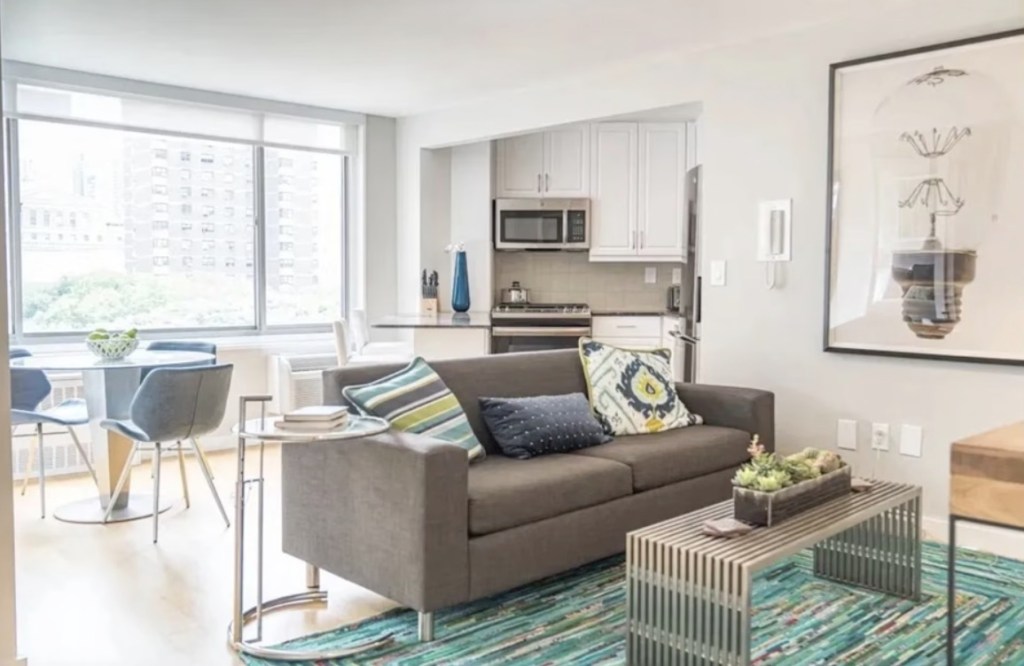New York City rent is continuing on their growing trajectory, and they are expected to climb even higher thanks to President Donald Trump’s comprehensive tariffs – all that two municipalities set to get the most hit.
While there is a 90-day pause in power in Trump’s “reciprocal” tariffs announced earlier this month in dozens, 25% tariffs for imported steel and aluminum imposed on March are still very active.
And this can speak bad news for New York City developers and tenants equally, because steel and aluminum are essential for building buildings in the country’s most populous meter, much destroyed by housing shortages.
“By inflating the construction costs, these tariffs can separate builders from starting new projects and forcing developers to pause or remove existing plans,” says Realtor.com® Joyayi XU in New York City Ratses.
Among the five Big Apple, Manhattan and Bronx municipalities are ready to suffer more from the imposition of Trump’s tariffs on building materials, victims of their success.
Last year, the two neighborhoods recorded the fastest growth rates in the newly allowed multifamilic home, at 24.6% and 24.2%, respectively, compared to their 2019–23 average.
And because they posted the biggest profits, Manhattan and Bronx now stand to lose more of the fees, which threaten to disrupt the construction of much needed housing.
Brooklyn, Queens and Staten Island are not immune to increasing development costs. Although all three municipalities saw a dip in the permit activity, Xu says tariffs can make things even worse by curbing new construction applications and raising rental levels across the board.
New York City Rates continue to grow
During the first three months of 2025, the average of renting rent in New York City increased to $ 3,397, an increase of 5.6%, or $ 179, compared to the same period in action.
The rents increased in all municipalities, but the truth about its reputation as America’s most expensive meter, Manhattan ran up the most dramatic growth of 5.5% year by year, or $ 235, running the average asking for a tear with $ 4,495 a month.
Brooklyn, the city’s most populous section, was not far from its richest neighbor in the north, with the average of the rent there climbing $ 3.748, with $ 178, or 5%, from last spring.
In Queens, rents increased 4.3%to $ 3,298, while Bronx recorded the most modest up of 0.7%, reaching $ 3,010. The data for the State Island were not immediately available because it was under consideration.
Compared to the spring of 2020, at the height of the Covid-19 pandemia, the average that searches rent in New York City was more than 18%, or $ 521, higher.
Meanwhile, the quarter of rent reports indicates that the smaller units running from a studio to two bedrooms were in greater demand than the larger apartments.
From January to March, the average renting for 0-2 bedrooms throughout the city was $ 3,365, representing an increase of 7.2%, or $ 226 from last year.
Meanwhile, the most widespread rents boasting three bedrooms or more saw a modest increase of 1.2%, or $ 56, reaching an average price of $ 4,773.

An enlarged look at the city’s rental market from the pre-fandemic era by the beginning of 2025 reveals a sudden turn: municipalities at lower cost saw the increase in the highest percentage of rent.
Bronx saw the most drastic average growth that required rents over the past five years, with a stunning 41.2% followed by Brooklyn with an increase of almost 40%, showing rapid demand of grwing in these traditionally affordable areas.
On the other hand, Manhattan at high prices without its average asking for Shimmy rents with only 0.2% since the beginning of 2020.
How much do you have to win to live in the big apple
The New York City may be the concrete jungle where dreams come true, but live there does not come free, as Realtor.com report shows.
To cope with renting a typical unit in four of the five municipalities, excluding Staten Island, while following the 30% revenue rule, which recommends that people spend no more than 30% of their gross income with housing costs, tenants will have to bring between 10,000 and $ 15,000 per month.
Predictively, renting an apartment in Manhattan calls for the highest income of $ 14,983, closely followed by Brooklyn, with $ 12,493.
Queens and Bronx are a little more affordable, so tenants there should make $ 10,933 and $ 10,033 respectively.
This translates into an annual household income of $ 179,796 in Manhattan, $ 149,916 in Brooklyn, $ 131,196 in Queens, and $ 120,396 in Bronx.
The problem is that the average average income of households throughout the municipalities fall dramatically slightly of those recommended, with gaps ranging from about 61% to Queens to a stunning bronze, forcing tenants to spend over 30% on housing and services just to keep a roof over their heads.
#NYC #rents #fly #municipalities #Trumps #fees
Image Source : nypost.com